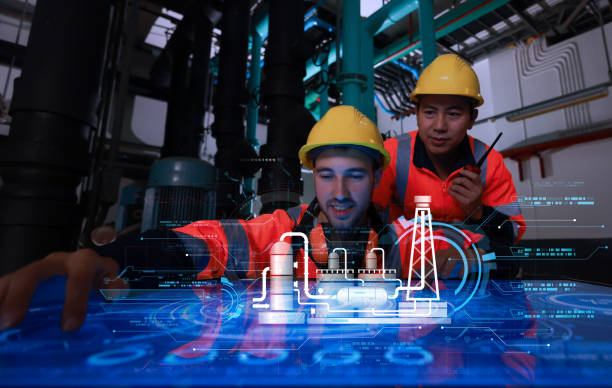In industries where hazardous gases are a constant threat, the evolution of gas detection distributor software has become crucial for maintaining safety and efficiency. This software has undergone significant advancements, ensuring that businesses can future-proof their operations and adapt to ever-changing safety standards and technological innovations. Here’s how gas detection distributor software has evolved and how it can future-proof your operations:
1. The Early Days of Gas Detection Software
Basic Monitoring Capabilities
In its initial stages, gas detection software provided basic monitoring capabilities. It was primarily focused on detecting gas levels and alerting personnel when dangerous levels were reached. These early systems, while functional, were often limited in their scope and lacked advanced features.
Manual Data Logging
Early gas detection systems required manual data logging, which was time-consuming and prone to human error. This process made it difficult to maintain accurate records and respond quickly to potential hazards.
2. Advancements in Technology
Real-Time Monitoring and Alerts
Modern gas detection distributor software offers real-time monitoring and instant alerts, significantly improving response times to gas-related incidents. This advancement ensures that any abnormal gas levels are detected immediately, allowing for swift action to mitigate risks.
Automated Data Logging
The introduction of automated data logging has eliminated the need for manual record-keeping. This feature ensures that all data is accurately recorded and easily accessible, reducing the likelihood of errors and improving overall safety.
3. Integration with IoT and Smart Devices
IoT Integration
The integration of Internet of Things (IoT) technology has transformed gas detection software. IoT-enabled devices can communicate with each other and the central software system, providing a comprehensive view of gas levels and other environmental factors in real-time.
Smart Device Compatibility
Modern gas detection software is compatible with various smart devices, including smartphones and tablets. This compatibility allows for remote monitoring and control, enabling personnel to stay informed and responsive even when they are not on-site.
4. Enhanced Reporting and Analytics
Comprehensive Reporting
Advanced gas detection software offers comprehensive reporting capabilities, allowing businesses to generate detailed reports on gas levels, incidents, and responses. These reports provide valuable insights that can help improve safety protocols and operational efficiency.
Predictive Analytics
The incorporation of predictive analytics allows businesses to identify trends and potential hazards before they become critical. This proactive approach helps in implementing preventive measures and minimizing risks.
5. Regulatory Compliance and Audit Readiness
Compliance Automation
Modern gas detection software ensures compliance with safety regulations and standards by automating the reporting process. This automation helps businesses maintain accurate records and meet regulatory requirements without the need for manual intervention.
Audit Readiness
With detailed records and comprehensive reports, businesses are always prepared for regulatory audits. This readiness not only saves time and resources but also ensures that safety standards are consistently met.
6. Future Trends in Gas Detection Software
Artificial Intelligence (AI)
The integration of AI in gas detection software is set to revolutionize the industry. AI can analyze vast amounts of data quickly, identifying patterns and anomalies that may indicate potential hazards. This capability enhances the software’s predictive and preventive measures.
Cloud-Based Solutions
Cloud-based gas detection software offers scalability and flexibility, allowing businesses to access data and manage systems from anywhere. This trend is particularly beneficial for companies with multiple locations or remote worksites.
Enhanced Cybersecurity
As gas detection software becomes more advanced, ensuring its cybersecurity is paramount. Future developments will focus on protecting data and systems from cyber threats, ensuring that the software remains reliable and secure.
In conclusion, the evolution of gas detection distributor software has significantly improved its capabilities, making it an essential tool for future-proofing operations. By embracing advancements such as real-time monitoring, IoT integration, predictive analytics, and AI, businesses can enhance safety, improve efficiency, and stay ahead of regulatory requirements. Investing in modern gas detection software is crucial for maintaining a safe and secure work environment in an ever-evolving industry.
